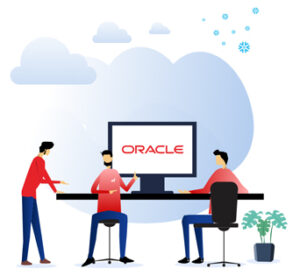Navigate the Oracle Java License Change with Oracle BYOL for Maximum Efficiency
Cuerpo
In the ever-evolving landscape of enterprise software, changes in licensing terms can cause significant ripples across IT departments and business strategies. One of the most impactful shifts in recent years has been the Oracle Java License Change. Companies that once relied on Java as a free-to-use runtime environment are now facing licensing costs and compliance challenges. Fortunately, Oracle offers a viable solution through its Bring Your Own License (BYOL) program, allowing businesses to retain flexibility and reduce costs when managing Java deployments.
This article explores how the Oracle Java License Change has transformed the way companies interact with Java, and how leveraging Oracle BYOL can mitigate risks and unlock greater value.

Understanding the Oracle Java License Change
For years, Oracle Java was a free staple in development environments and production systems. However, in 2019, Oracle announced significant changes to the licensing of Oracle Java SE. The free public updates for commercial use were discontinued, prompting organizations to either purchase a subscription or switch to an alternative distribution.
The Oracle Java License Change means that businesses using Oracle Java SE for internal operations, production systems, or commercial products must now pay for a subscription. The license model was replaced by a more structured and controlled model, including a per employee and per processor metric, depending on deployment.
This shift has led many companies to reevaluate their Java usage and licensing strategies. The compliance risk associated with unlicensed usage, coupled with the potential financial burden, has turned what was once a simple integration into a complex legal and operational decision.
What is Oracle BYOL?
Oracle BYOL, or "Bring Your Own License," is Oracle’s approach to giving customers flexibility and control. It allows organizations to use their existing Oracle licenses in other environments, such as Oracle Cloud Infrastructure (OCI), third-party clouds, or on-premises deployments. This applies to a range of Oracle products, including Oracle Database, Middleware, and now Java.
With Oracle BYOL for Java, businesses can apply existing Java SE licenses toward new infrastructure projects, ensuring they remain compliant without incurring additional costs. This option empowers companies to adopt modern architectures such as cloud-native applications or hybrid cloud models without being locked into new, separate license agreements.
Key Benefits of Oracle BYOL After the Java License Change
Cost Efficiency
One of the most immediate benefits of using Oracle BYOL in response to the Oracle Java License Change is cost savings. Companies that already hold Java SE subscriptions can deploy Java across multiple environments without repurchasing licenses for each deployment, maximizing the value of their current investment.
Simplified License Management
Oracle BYOL helps streamline license tracking by consolidating usage under one agreement. Instead of juggling multiple licenses for on-premise and cloud deployments, organizations can simplify audits, renewals, and reporting using one centralized license inventory.
Cloud Flexibility
As more companies move workloads to the cloud, Oracle BYOL offers the agility to use Oracle Java in the cloud without additional licensing costs. This flexibility is particularly beneficial for businesses adopting OCI, where BYOL is fully supported and optimized.
Compliance Confidence
Licensing compliance has become a major concern since the Oracle Java License Change. BYOL enables businesses to confidently deploy Oracle Java knowing their usage aligns with Oracle’s terms, reducing the legal and financial risks associated with non-compliance.
Strategic Response to the Oracle Java License Change
Many IT departments reacted to the Oracle Java License Change by migrating to open-source alternatives such as OpenJDK or third-party distributions like Amazon Corretto and AdoptOpenJDK. While this is a valid route, it often requires code testing, patching, and long-term support considerations. It’s not always viable for companies running legacy systems or commercial products deeply integrated with Oracle Java.
For organizations deeply tied into the Oracle ecosystem, leveraging Oracle BYOL provides a strategic balance. It avoids the disruption of replatforming while ensuring compliance and cost efficiency. BYOL also complements broader Oracle licensing strategies, especially for those using Oracle Cloud or other Oracle-based enterprise systems.
How to Implement Oracle BYOL for Java
Assess Your Current Java Usage
Conduct a Java license audit across all environments – development, testing, production, and legacy systems. Identify how many licenses you currently hold and whether they can be applied under the BYOL model.
Engage with Oracle or a Licensing Partner
Work with Oracle or a trusted licensing advisor to confirm eligibility for BYOL. This step ensures that you align your license entitlements with your usage and avoid non-compliance issues.
Plan Your Deployment
Whether you're moving to Oracle Cloud or staying on-prem, define where and how Java will be deployed. Oracle BYOL supports both models, but strategic planning is essential to maximize value.
Monitor and Maintain Compliance
Establish processes for continuous monitoring of license usage. Use Oracle tools or third-party asset management software to maintain visibility over Java deployments and ensure continued compliance.

Conclusion: Turn License Change Into Opportunity with Oracle BYOL
The Oracle Java License Change may have introduced complexity, but it has also driven innovation in how businesses manage their software assets. Oracle BYOL presents an opportunity for organizations to stay compliant, control costs, and retain flexibility in a multi-cloud world.
Rather than viewing licensing changes as a burden, forward-thinking businesses can use tools like Oracle BYOL to align their technology strategy with operational and financial goals. Whether you're modernizing infrastructure, shifting to the cloud, or ensuring audit readiness, Oracle BYOL can turn the challenge of licensing into a catalyst for smart, sustainable growth.







Comentarios